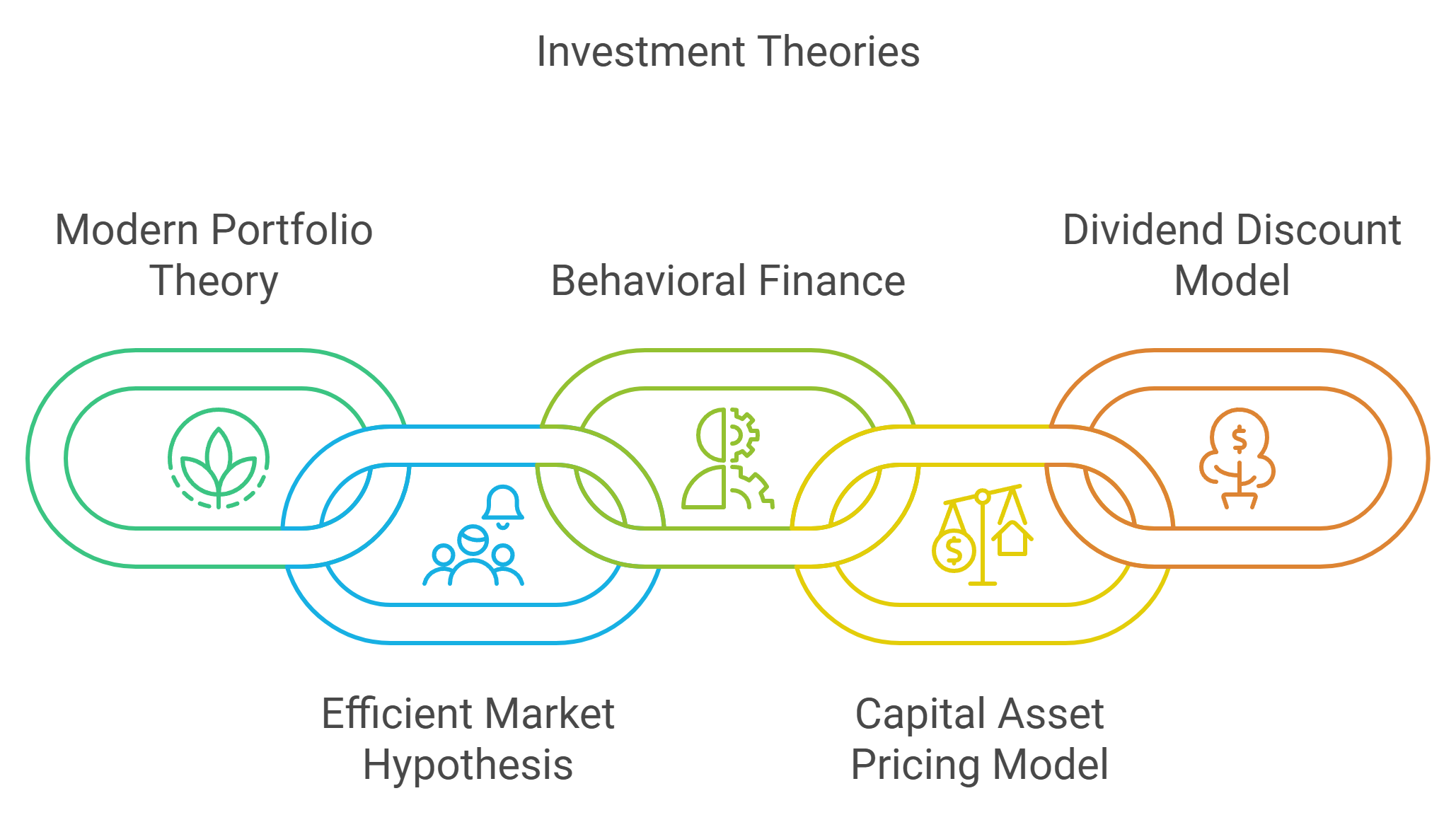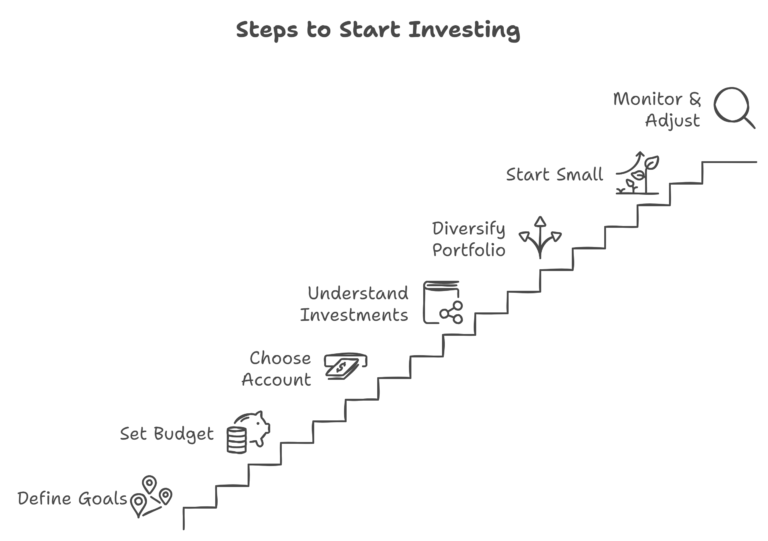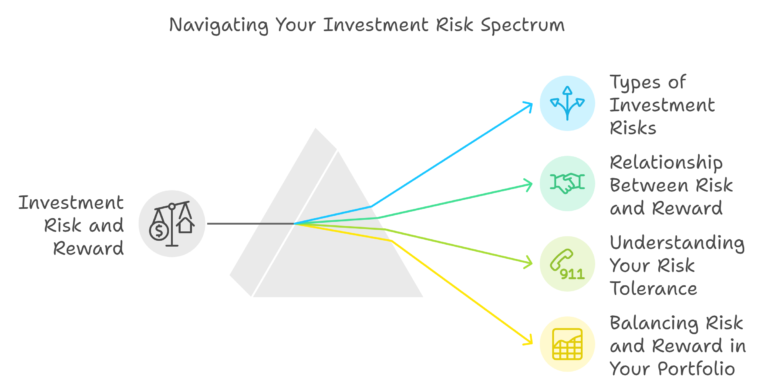Table of Contents
Introduction
Successful long-term investing involves more than just buying and holding stocks. It requires an understanding of the key theories that shape the way we think about investing, risk, and returns. In this blog, we’ll explore some of the foundational investment theories that can help you make more informed decisions, build a robust portfolio, and create long-term wealth.
Key Investment Theories
Here are some of the most important theories that long-term investors should know and understand:
- Modern Portfolio Theory (MPT)
Developed by Harry Markowitz, Modern Portfolio Theory focuses on the importance of diversification to minimize risk while maximizing returns. MPT suggests that investors can build an “efficient portfolio” that offers the highest expected return for a given level of risk by spreading their investments across different asset classes. - Efficient Market Hypothesis (EMH)
Proposed by Eugene Fama, the Efficient Market Hypothesis states that financial markets are informationally efficient, meaning that stock prices fully reflect all available information. According to EMH, it’s impossible to consistently achieve higher returns than the overall market because stock prices already account for all relevant data. - Behavioral Finance
Behavioral Finance combines psychology and economics to understand how cognitive biases and emotional reactions affect investor behavior. It addresses biases such as loss aversion, overconfidence, and herd behavior, which can lead to irrational decisions and suboptimal investment outcomes. Understanding these biases can help investors make better long-term decisions. - Capital Asset Pricing Model (CAPM)
The Capital Asset Pricing Model is used to determine the expected return of an asset based on its risk in relation to the market (known as systematic risk). CAPM suggests that investors need to be compensated for both the time value of money and the risk they take, making it a useful tool for assessing whether an investment is worth the risk. - Arbitrage Pricing Theory (APT)
Arbitrage Pricing Theory is an alternative to CAPM, arguing that an asset’s return is influenced by various macroeconomic factors (e.g., interest rates, inflation). Unlike CAPM, APT allows for multiple factors affecting asset prices, making it a more flexible model for pricing assets. - Dividend Discount Model (DDM)
The Dividend Discount Model is used to evaluate stocks by predicting the present value of future dividends. It’s particularly useful for investors interested in dividend investing, as it helps determine whether a stock is undervalued or overvalued based on its expected dividend payouts. - Compound Interest Theory
While not a formal theory in the academic sense, understanding compound interest is crucial for long-term investors. Compounding refers to generating earnings on an asset’s reinvested earnings, leading to exponential growth over time. The earlier you start, the more powerful compounding becomes in building wealth. - Risk-Return Tradeoff
The Risk-Return Tradeoff concept states that higher risk is associated with higher potential returns. Investors must balance their risk tolerance with the returns they aim to achieve. The Sharpe Ratio is a tool used to measure risk-adjusted returns, helping investors compare different investment opportunities.
Key Components, Strategies, and Theories for Long-Term Investing
| Key Components of Long-Term Investing | Long-Term Investing Strategies | Theories to Look at and Implement |
| Time Horizon | Value Investing, Growth Investing | Modern Portfolio Theory |
| Patience and Emotional Discipline | Index Investing, Dividend Investing | Behavioral Finance |
| Diversification | Index Investing | Modern Portfolio Theory |
| Compounding | Dividend Investing | Compound Interest Theory |
| Risk Management | Value Investing, Growth Investing | Risk-Return Tradeoff, CAPM, APT |
Applying These Theories to Long-Term Investing
These theories are not just academic—they have practical implications that can make a big difference in your investment journey:
- Modern Portfolio Theory and diversification help reduce risk by spreading investments across different asset classes.
- Behavioral Finance helps you understand and overcome biases that may lead to poor decision-making, such as fear during market downturns or overconfidence in rising markets.
- CAPM and APT can be used to evaluate whether an asset is fairly priced given the expected risk and return.
- Compound Interest is key for growing wealth over time, emphasizing the importance of reinvesting earnings.
By understanding these theories, you can create a more informed, strategic approach to your long-term investing journey. They help you make rational decisions, manage risk effectively, and take advantage of opportunities that align with your goals.
Long-term investing requires a solid understanding of the theories that underpin successful strategies. By learning about Modern Portfolio Theory, Behavioral Finance, CAPM, and others, you can build a comprehensive approach to investing that maximizes your chances of success. Remember, knowledge is power — especially when it comes to making informed investment decisions.
Ready to start applying these theories to your investments? Use ValueIt to explore different opportunities and take the first step toward building a smart, well-balanced portfolio.





